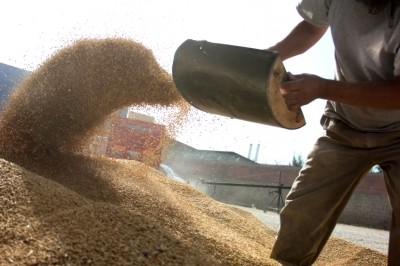US FDA: Feed, animal drug safety a priority for 10 year plan

Oversight of feed safety, nutrition and animal health, said the US agency's publication, is fundamental to ensuring the safety and quality of the food supply and to consumer confidence.
“It is imperative that we continue driving toward a more proactive, preventive, risk-informed approach to food and feed safety, nutrition, and animal health that makes excellent use of our scarce resources,” said Stephen Ostroff, deputy commissioner for foods and veterinary medicine, and Howard Sklamberg, deputy commissioner for global regulatory operations and policy about the plan.
They outlined several challenges that will have to be borne in mind in terms of the execution of the program including globalization and complexity of the feed supply; advances in sciences and technologies; expectation from the public, industry and Congress, foodborne illness and diet-related chronic disease.
Feed safety
Feed safety and protecting animals from foreseeable hazards is a primary step in the agency’s food safety goal, said the FDA.
The first objective is to set and maintain high rates of compliance with preventative control standards for the “global farm-to-table continuum,” the US agency said. This effort includes setting and maintaining science-based standards for preventive control regarding chemical and microbiological hazards in feed and food products, it added.
The regulator want to also improve its approach to foodborne illness outbreaks and feed safety related incidents. In terms of implementation efforts, the FDA said it intends to: “Improve data analysis and collaboration with food and feed safety partners, including industry, academia, and other domestic and foreign regulatory bodies."
An additional step will be to address risk prevention and find ways to best use the FVM resources available, it added.
Enhancing the safety of feed additives and improving partnerships with international, federal, state, local trial and territorial agencies are other stages of the process, the agency said.
Another goal of the program is to protect animal health and improve animal health products, the agency said. It wants to improve oversight of the supply chain and address the use of unapproved animal drug products being marketed and sold in the US, said the agency.
“The challenges posed by innovative new technologies and increased globalization require a regulatory review process that draws together both pre- and post-market functions, helps prioritize and manage risk, and optimizes the use of agency resources,” said the FDA. “Moreover, antimicrobial resistance is considered a serious public health threat, and the FVM Program is committed to informing the public and helping shape public policy regarding the judicious use of medically important antimicrobial drugs in food-producing animals.”
It will also evaluate areas of risk in the manufacturing, production and distribution of animal health products and improve how it goes about detecting problems with treatments currently in use, the agency said.
“The FVM program reviews animal drug applications for new and generic drugs intended for animals that produce food, for companion animals, and for minor species,” said the agency. “When the drug is for use in food-producing animals, not only must the safety [for] the animal be demonstrated, but also the safety of food products derived from the treated animals that are intended for human consumption.”
Additionally, as the global supply network becomes more complex, more opportunities for contamination or adulteration are presented and those risks have to be identified and mitigated when possible, the agency said.
Communication goals
Other goals in the overarching program include working to promote an environment that supports healthy and safe food decisions for humans and animals, the FDA said.
“The FVM Program plays an important role in reducing the prevalence of nutrition related risk factors for chronic disease and improving nutritional status in humans and animals,” said the agency. “It does so by improving the way human and animal nutrition information is communicated to and understood by consumers so they can make healthier dietary choices, by monitoring the composition of the foods in the marketplace and consumption by the US population, and by facilitating new products and the reformulation of existing products to be healthier and more nutritious.”
The final goal of the long-term plan is to improve the leadership and management of the FVM program, the agency said.








